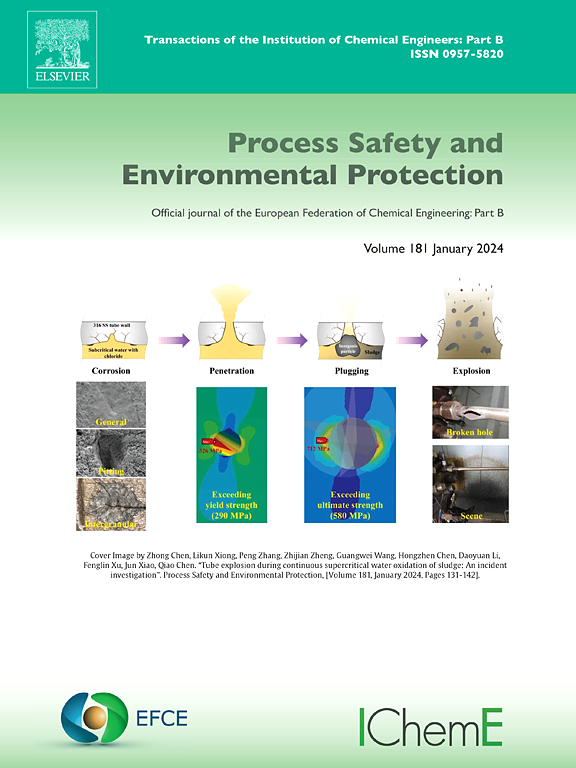Toxic and inhibitory effects of trichloroethylene on hydrolysis acidification with phenol and benzoic acid co-metabolism
IF 6.9
2区 环境科学与生态学
Q1 ENGINEERING, CHEMICAL
引用次数: 0
Abstract
Hydrolysis acidification (HA), an efficient biological pretreatment technology, has demonstrated significant potential in degrading toxic and recalcitrant compounds. In this study, the reaction efficiency was utilized to investigate the toxic and inhibitory effects of trichloroethylene (TCE) on HA during the co-metabolism of phenol and benzoic acid. Results indicated that high TCE concentrations exerted an inhibitory effect on HA, with an EC50 value of 75 mg/L. Phenol and benzoic acid as co-metabolized substrates for HA exhibited a unique response to the toxicity of TCE, that increasing concentrations of phenol and benzoic acid enhanced the dechlorinating degradation of TCE by promoting secretion of extracellular polymeric substance (EPS), however, causing partial cell death. At a TCE concentration of 75 mg/L, when the concentrations of phenol and benzoic acid were 375 mg/L, the dechlorination efficiencies of TCE were 58.53 % and 49.71 %, the acid yields were 60.35 and 50.93 mg COD/g VSS, the EPS concentrations were 40.16 and 33.77 mg COD/g VSS, the DNA concentrations in solution were 10.45 and 10.97 mg COD/g VSS(significantly higher than blank control group: 8.97 mg COD/g VSS), respectively. This enhancing effect was consistently observed across various concentrations of phenol and benzoic acid, and dechlorination degradation of TCE has also been effectively improved. The unique toxic response may be attributed to the compact structure of granular sludge and the increased secretion of EPS, which likely served as protective barriers for cells against TCE toxicity.
求助全文
约1分钟内获得全文
求助全文
来源期刊

Process Safety and Environmental Protection
环境科学-工程:化工
CiteScore
11.40
自引率
15.40%
发文量
929
审稿时长
8.0 months
期刊介绍:
The Process Safety and Environmental Protection (PSEP) journal is a leading international publication that focuses on the publication of high-quality, original research papers in the field of engineering, specifically those related to the safety of industrial processes and environmental protection. The journal encourages submissions that present new developments in safety and environmental aspects, particularly those that show how research findings can be applied in process engineering design and practice.
PSEP is particularly interested in research that brings fresh perspectives to established engineering principles, identifies unsolved problems, or suggests directions for future research. The journal also values contributions that push the boundaries of traditional engineering and welcomes multidisciplinary papers.
PSEP's articles are abstracted and indexed by a range of databases and services, which helps to ensure that the journal's research is accessible and recognized in the academic and professional communities. These databases include ANTE, Chemical Abstracts, Chemical Hazards in Industry, Current Contents, Elsevier Engineering Information database, Pascal Francis, Web of Science, Scopus, Engineering Information Database EnCompass LIT (Elsevier), and INSPEC. This wide coverage facilitates the dissemination of the journal's content to a global audience interested in process safety and environmental engineering.
 求助内容:
求助内容: 应助结果提醒方式:
应助结果提醒方式:


